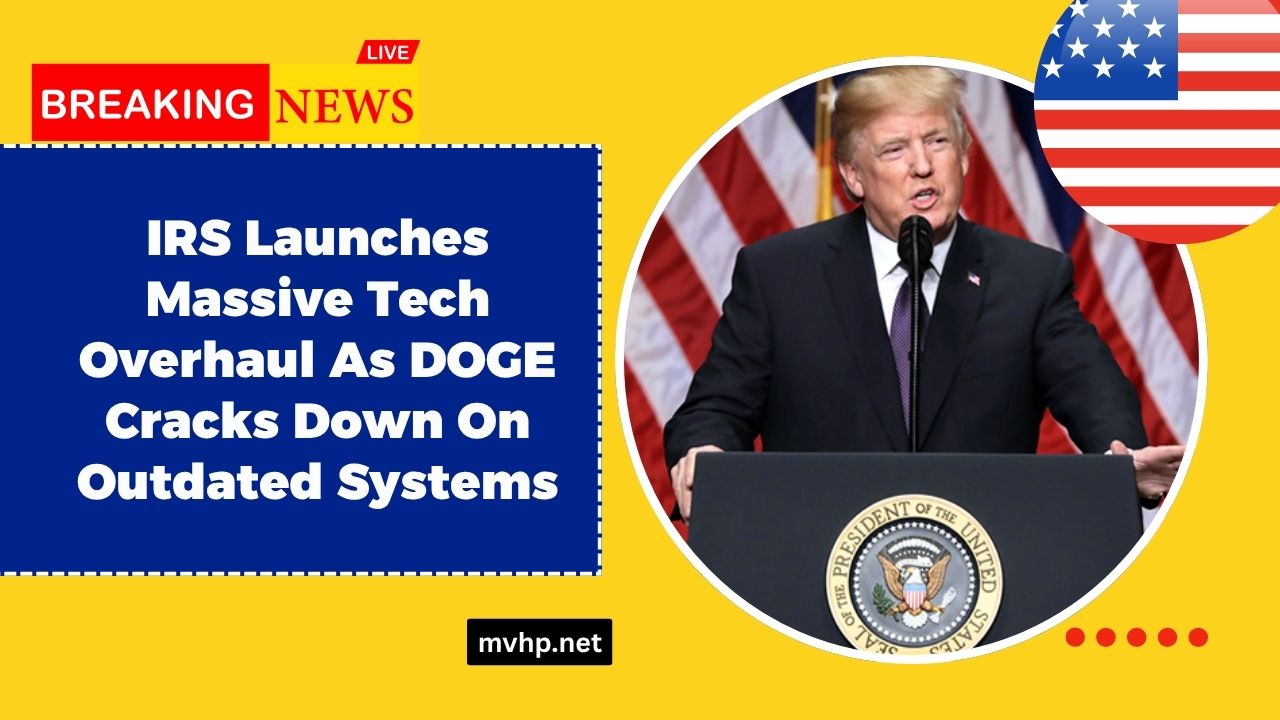The Internal Revenue Service (IRS) is undertaking one of the most ambitious IT transformations in its history. At the core of this change is the overhaul of the Integrated Data Retrieval System (IDRS), a 50-year-old legacy infrastructure that manages vast taxpayer data.
As the agency modernizes this essential component, it faces increased scrutiny from the Department of Government Efficiency (DOGE)—especially concerning data sharing, system security, and civil liberties.
What is IDRS and Why Is It Being Replaced?
The IDRS has been in operation since the early 1970s and serves as the IRS’s primary tool for processing taxpayer data, generating notices, and helping agents respond to inquiries. However, the system runs on outdated COBOL programming and has become increasingly difficult to maintain.
The IRS has now confirmed its plans to merge multiple systems—including those handling individual and business returns—into a single national tax-processing engine. This modernization will enable real-time data retrieval, faster error detection, and improved refund tracking.
Key Features of the New System
| Feature | Old System (IDRS) | Modernized System |
|---|---|---|
| Architecture | COBOL Mainframe | Cloud-Based Integrated Platform |
| Data Processing | Batch, Delayed | Real-Time National Processing |
| User Access | Manual Switching Between Systems | Single User Interface |
| Refund Tracking | Slower & Inconsistent | Faster, Transparent, and Accurate |
| Fraud Detection | Minimal Automation | Automated Error Checks & Clawback Ability |
| Maintenance & Staffing | High Risk, Single Points of Failure | Streamlined, Easier to Update |
DOGE’s Oversight Raises Questions
The modernization is not happening in isolation. The Department of Government Efficiency (DOGE) has taken a lead role in managing this upgrade, pushing for fast-track development and collaborating with private tech companies to create a unified data platform.
Their goal: integrate taxpayer systems to streamline services and reduce inefficiencies across federal departments.
However, DOGE’s involvement has sparked widespread debate. Questions have been raised about:
- Data privacy: Concerns over which government departments have access to sensitive taxpayer data.
- System security: Risks involved in consolidating decades of financial data into a new platform.
- Public transparency: The speed at which these changes are occurring without extensive public consultation.
Tech Partners and API Integration
To meet aggressive modernization timelines, the IRS is working with a number of high-profile technology firms. The goal is to develop a unified API—a digital pipeline that allows agents to access all taxpayer records from a single interface.
Currently, agents must toggle between more than 10 disconnected systems to compile taxpayer data. The new approach will enable faster, more cohesive service, supporting a “one-agent, one-screen” customer service experience.
Benefits of the Overhaul
- Improved Taxpayer Support: With a single interface, IRS agents can respond to taxpayer queries faster and more accurately.
- Fewer Errors: Real-time processing will help detect duplicate or incorrect filings immediately.
- Stronger Fraud Detection: The system can automatically flag and recover erroneous or suspicious payments.
- Better User Experience: Taxpayers may benefit from improved online portals and quicker refunds.
Risks and Challenges
Despite the benefits, the overhaul carries significant risks:
- Data Security: Consolidating sensitive data increases vulnerability if not properly secured.
- Legacy Skill Shortage: COBOL experts are aging out of the workforce, creating gaps during the transition.
- Legal Concerns: Federal lawsuits are challenging access policies, particularly regarding cross-agency data sharing.
- Workforce Cuts: Streamlining may result in job reductions within the IRS, affecting both morale and service.
Public and Expert Concerns
Many experts argue that modernization is essential but should not come at the cost of civil liberties or public trust. The public expects the IRS to protect their data, not just process it efficiently.
Transparency, accountability, and public engagement will be key to ensuring that this overhaul strengthens—not weakens—trust in government systems.
The IRS’s modernization of its tax systems is a long-overdue move toward a more efficient and responsive agency. While the integration of new technologies and real-time processing promises better service, the involvement of external departments and private companies introduces complex challenges.
How the IRS balances innovation with privacy, and speed with security, will determine whether this tech overhaul truly benefits American taxpayers.
FAQs
What is the purpose of the IRS modernizing its tax systems?
The goal is to replace outdated systems with real-time processing tools to improve efficiency, reduce fraud, and enhance taxpayer support.
Will this affect how taxpayers receive their refunds or pay taxes?
Yes. The new system is expected to provide faster refund processing and more user-friendly services for tax payment and status tracking.
What are the biggest risks with this overhaul?
Data security, transparency in data sharing, and the possible loss of experienced personnel during the transition are top concerns.



